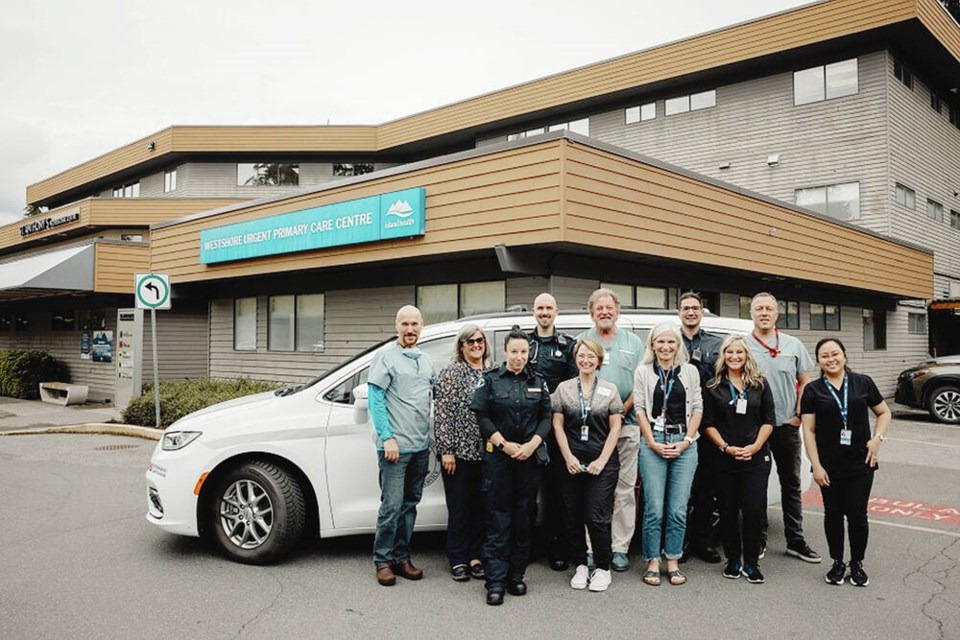When you call 911 for an ambulance in Greater Victoria or Nanaimo, you might get a solo paramedic in a minivan if your medical condition is deemed not urgent.
It’s an initiative aimed at easing pressure on emergency departments and connecting people to care more quickly, said Ford Smith, director of the clinical hub at B.C. Emergency Health Services.
The “link and referral unit” paramedics can take a person to an urgent and primary care centre (UPCC), a sobering centre, a community health centre or a pharmacy, or an emergency department if needed, Smith said.
“Going through a UPCC means that patient is accessing care a lot more quickly than they would otherwise, waiting in the emergency waiting room, and it also then frees up our emergency ambulance resources for the higher-acuity call — so the heart attacks, strokes,” he said.
When people in Greater Victoria and Nanaimo call 911 for an ambulance, the call is triaged in a dispatch centre run by B.C. Emergency Health Services. The call might be triaged again by paramedics in the dispatch centre who could contact the patient for more information.
If the call fits the criteria for link and referral unit paramedics — call takers assess whether someone is mobile with no leg or foot injuries, because there’s no stretcher — a paramedic driving a minivan is dispatched to perform a clinical assessment and discuss care options with the patient.
Anyone who requests an ambulance will receive one, Smith said.
The link and referral unit paramedics are in 18 communities across B.C., including Greater Victoria and Nanaimo, where the program launched this year.
Six Greater Victoria urgent and primary care centres run by Island Health have partnered with the program to accept patients transported by link and referral unit paramedics.
Patients with medical issues that need to be seen within 12 to 24 hours can be taken to a UPCC, said Amber Hay, regional director of primary care for Island Health.
Cathy Edwards, manager of the West Shore and North Quadra UPCCs, said patients sometimes call for an ambulance because they can’t get a ride to the emergency department.
In the months since the paramedics began bringing patients to UPCCs, doctors have been seeing many older patients who likely would have had long waits in emergency departments because their medical concerns wouldn’t be high priority, Edwards said.
The program has the potential to be a “game changer” in how paramedics respond to non-emergency calls, but in an ideal world, the paramedics would be paired for safety, said Ian Tait, communications director for Ambulance Paramedics of British Columbia, the union representing about 4,500 paramedics and emergency dispatchers in the province.
“When you are working alone, there’s all sorts of issues with fatigue, there’s issues with being by yourself in an unsafe situation. You don’t have a second set of eyes to maybe see something that you’re not seeing because you’re too focused on the patient,” Tait said.
Violence against paramedics has become so common that it’s almost accepted as normal, and there’s potential for danger on every call, he said.
The union has a zero-tolerance policy for violence, but “it’s impossible to mitigate that in the field,” Tait said.
>>> To comment on this article, write a letter to the editor: [email protected]




